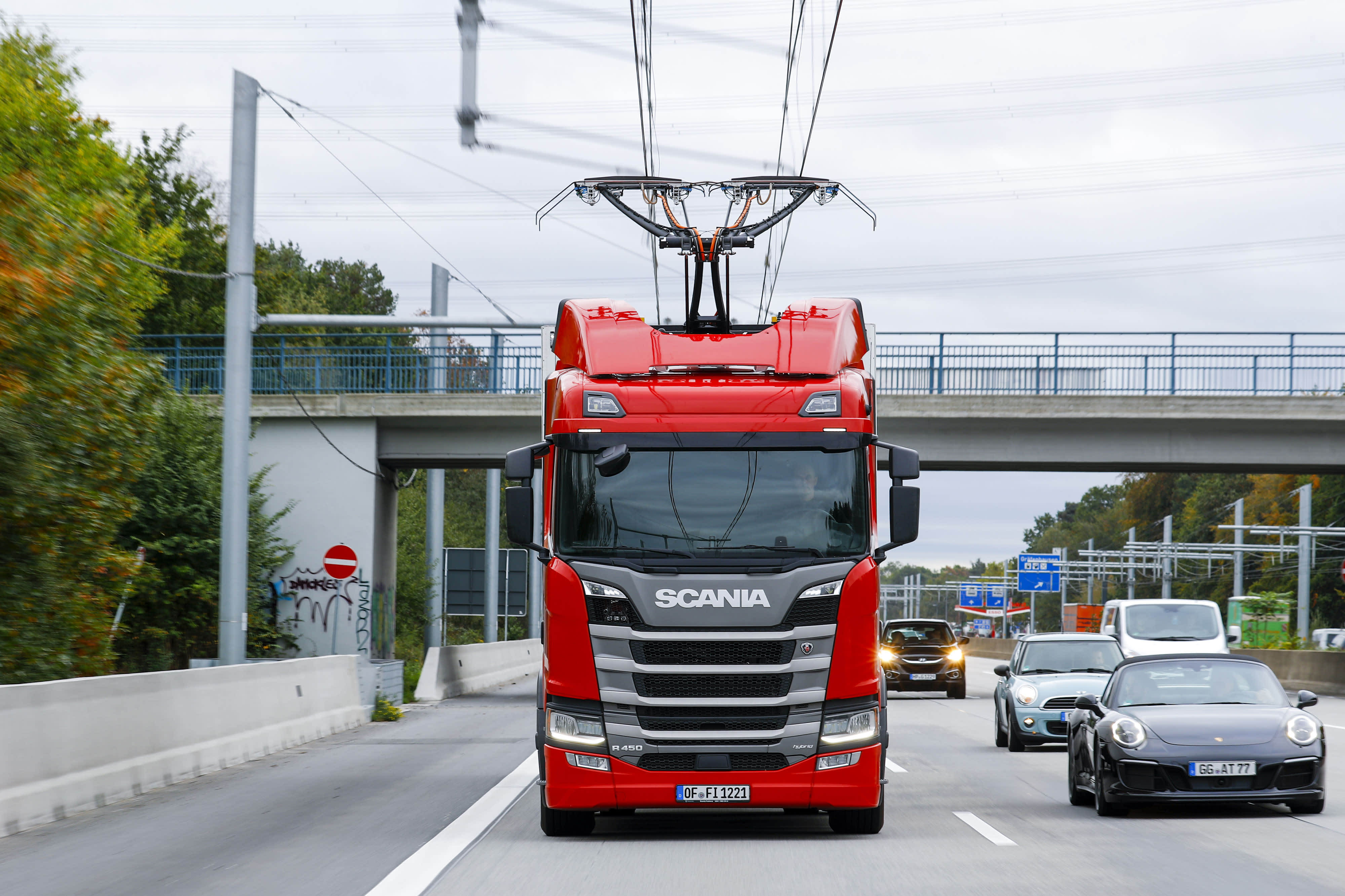The U.K.’s Department of Transport has commissioned a consortium to look into the viability of using overhead wires to power long-distance trucks.
Headed up by construction and engineering group Costain, it includes companies such as Scania and Siemens Mobility, among others, and represents the latest example of how industry and government are trying to develop solutions focused on decarbonizing transportation.
In a statement issued earlier this week, Costain explained how the consortium had “proposed an ‘electric road system'” that would harness Siemens Mobility’s “eHighway” technology, which uses overhead lines to provide trucks with electricity.
According to Siemens Mobility, when using the eHighway, “trucks can operate completely electrically and at the same time charge their batteries without using fuel.”
The funding has been delivered via Innovate UK, the U.K.’s innovation agency. Costain said it was hoped the study, which is due to last nine months, would act as “the forerunner of a scheme that aims to see the UK’s major roads served by overhead lines by the 2030s.”
Breaking things down, the team will focus on the electrification of a stretch of road between the South Yorkshire town of Doncaster, its airport and the Port of Immingham, on the east coast of England.
While the U.K.-based project will be looking into the potential of using overhead wires to power road-based transportation, the tech has already been deployed in other parts of the world. Siemens Mobility says tests of the eHighway are underway in Germany on three public routes.
Sue Kershaw, Costain’s managing director for transportation, described the study as “another important step towards understanding how industry could work together to tackle one of the largest carbon emission producers in the country.”
News about the eHighway initiative comes at the end of a month in which the U.K. government said it wanted to create a net zero transport sector by the year 2050.
The above goal represents a major task. According to the government, transport was responsible for 27% of the U.K.’s greenhouse gas emissions in 2019. Breaking things down further, heavy goods vehicles accounted for 18% of emissions from road-based transport.
In a sign of how times are changing, a number of major companies are now attempting to develop solutions to the challenges posed by the electrification of larger vehicles.
Three major transportation firms, for instance, look set to work with one another on the development of a European charging network for “battery electric heavy-duty long-haul trucks and coaches.”
In a joint announcement at the beginning of July, Volvo, Daimler Truck and the Traton Group said they had signed a non-binding agreement related to the installation and operation of the network.
The goal is to set up a joint venture that all three firms would own an equal part of, with operations slated to commence in 2022.
As the number of EVs on our roads increases, extensive charging networks will need to be rolled out for all types of vehicles to meet increased demand and dispel lingering concerns around “range anxiety” — the notion that EVs aren’t able to undertake long journeys without losing power and getting stranded.
The electrification of long-haul, heavy-duty trucks and coaches poses its own set of unique challenges. As the International Energy Agency’s Global EV Outlook for 2021 notes, “long-haul trucking requires advanced technologies for high power charging and/or large batteries.”
